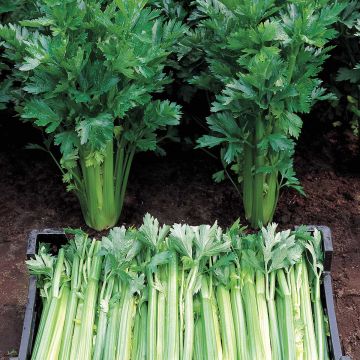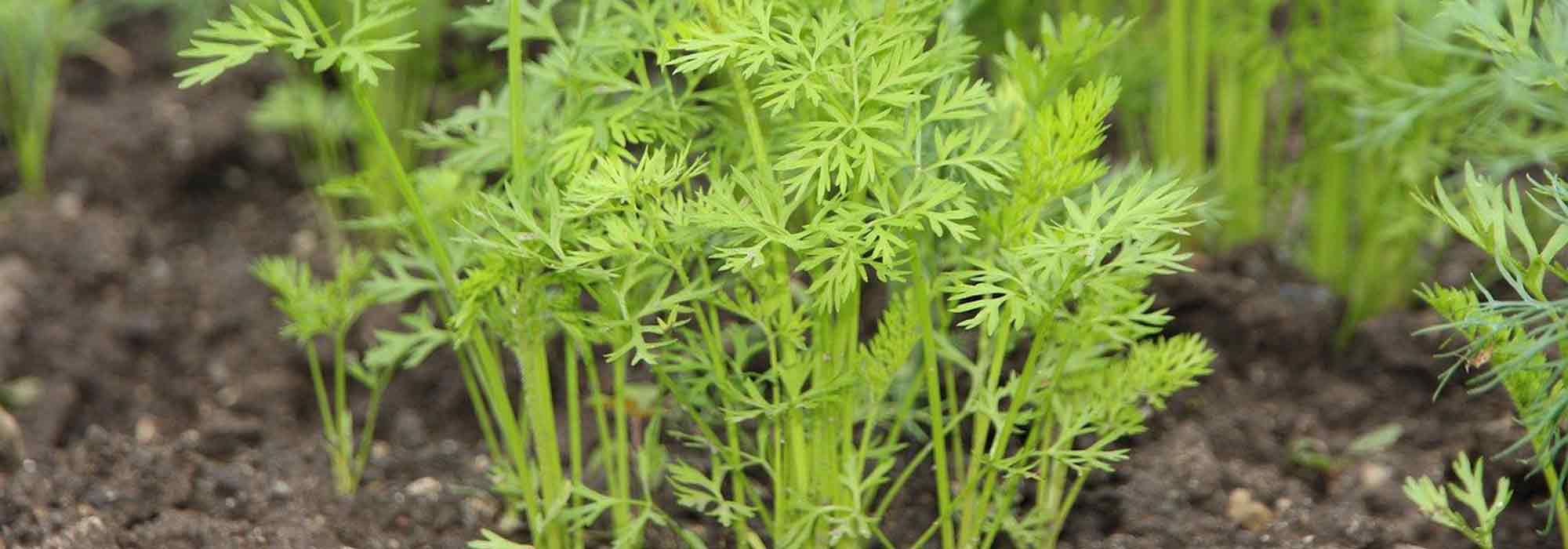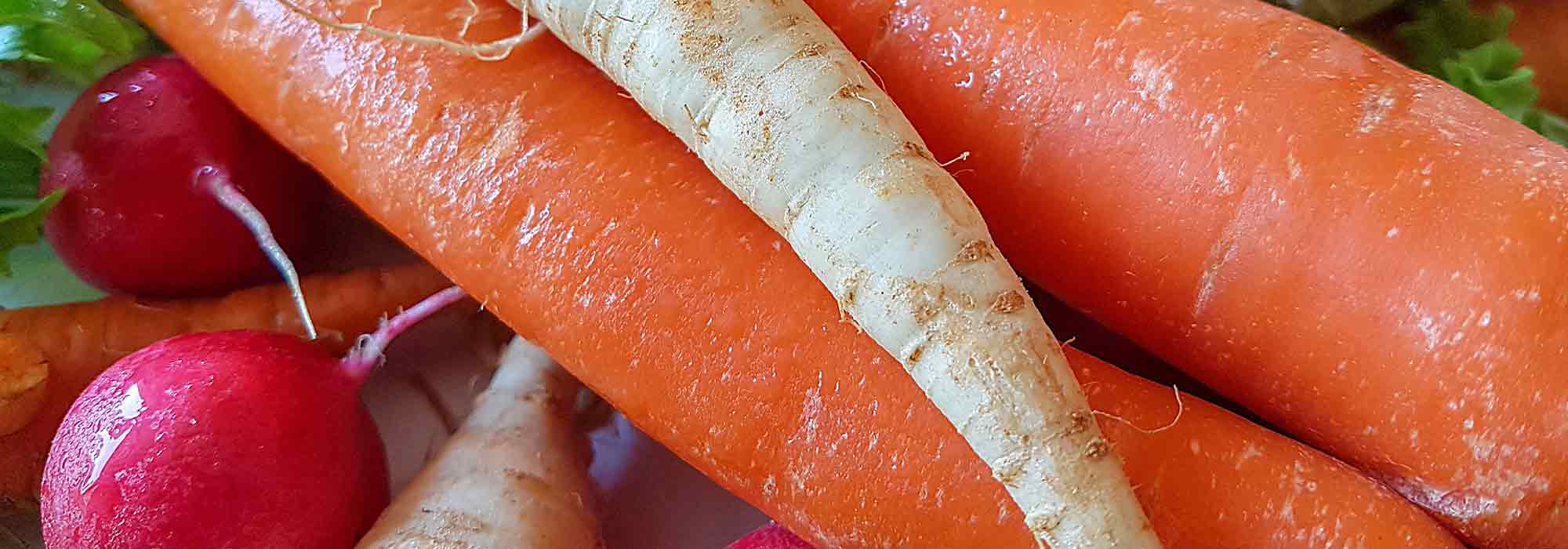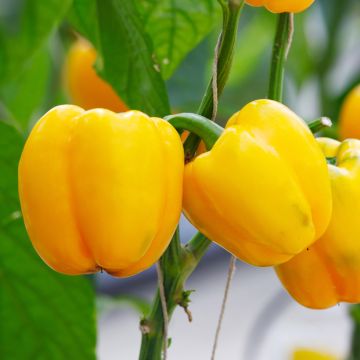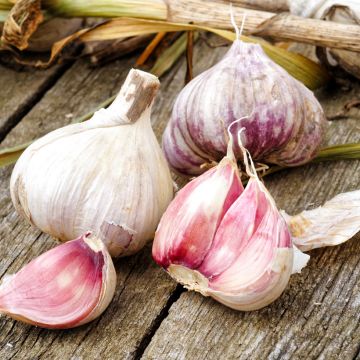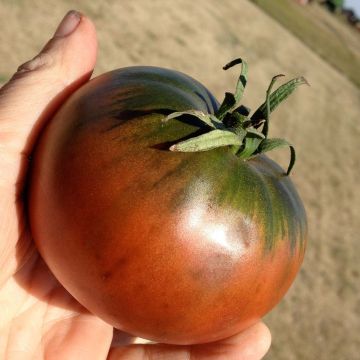

Organic Per-Cel - Parsley Celery
Organic Per-Cel - Parsley Celery
Apium graveolens secalinum Per-Cel
Leaf celery, Cutting celery, Chinese celery
Thanks to the individuals (Laeticia for order preparation and M.D. from the shipping department), the 2 plants I received seem healthy. Planted in 2 small pots, I am now patiently waiting for them to take root... (or not?).
Thierry, 04/06/2022
Special offer!
Receive a €20 voucher for any order over €90 (excluding delivery costs, credit notes, and plastic-free options)!
1- Add your favorite plants to your cart.
2- Once you have reached €90, confirm your order (you can even choose the delivery date!).
3- As soon as your order is shipped, you will receive an email containing your voucher code, valid for 3 months (90 days).
Your voucher is unique and can only be used once, for any order with a minimum value of €20, excluding delivery costs.
Can be combined with other current offers, non-divisible and non-refundable.
Home or relay delivery (depending on size and destination)
Schedule delivery date,
and select date in basket
This plant carries a 6 months recovery warranty
More information
We guarantee the quality of our plants for a full growing cycle, and will replace at our expense any plant that fails to recover under normal climatic and planting conditions.

Description
The Per-cel (Apium graveolens seclinum), as its name suggests, is a plant resulting from the cross-breeding of parsley, from which it inherited hardiness and the curly aspect of the foliage and celery, which bestowed upon it its unique aroma. Its stems and leaves can be consumed raw or cooked in soups, Asian cuisine, and all simmered dishes. The root can also be cooked like a carrot or parsnip. Per-cel can be planted all year round, except in July-August, for a harvest as needed. Like parsley, it is a biennial plant that does not disappear in winter but develops into a more generous clump. Some seeds can be left to produce for resowing in early spring.
Parsley and celery belong to the Apiaceae family (formerly Umbelliferae) and are genetically close enough to be crossed and produce fertile offspring like Per-cel, capable of producing viable seeds. Its life cycle is biennial: the plant sprouts and develops into a clump in the first year, retains its foliage during the following winter, and then prepares to flower in its second year. Flowering and seed production marks the end of its life. It is a very aromatic plant in all its parts. Its foliage is a beautiful glossy green, composed of flat, undulate and heavily cut leaves, carried by fleshy and channelled stalks or petioles, hollow on the inside and not very fibrous. Flowering occurs in the summer of the second year, taking the form of umbels of white-yellow-greenish flowers that are highly visited by pollinating insects. Per-cel develops an elongated edible root called a pivot, fragrant and yellowish, resembling a carrot.
In terms of cooking, Per-cel is used to replace parsley and celery in culinary preparations. It is cultivated for its leaves and stalks, which can be cut as needed, and for its roots. The leaves and stalks can be consumed raw, for example, in salads or with raw vegetables, or cooked in omelettes, vegetable dishes, fish en papillote, dishes in sauce, stews, and soups. They can even be candied with sugar, like Angelica. The root can be cooked to accompany other vegetables or used to make a soup. Per-cel leaves resemble parsley and perfectly flavoured bouquet garni, soups, or simmered dishes. They are rich in vitamins and minerals and low in calories. The plant has culinary, diuretic, hypoglycemic, aphrodisiac, and digestive properties.
In the vegetable garden, plant Per-cel in a sunny spot, in loose, well-drained soil enriched with organic fertiliser, which remains fresh even in summer. It is a hardy plant that can reach 25 to 35 cm (10 to 14in) in height (60 cm (24in) when flowering). It can be grown in a large pot on a balcony or terrace.
Harvest: Pick the leaves at the base as needed, as long as the plant is not flowering. As for the root, it is harvested in autumn and before the first frost in the first year of cultivation. Dig up the roots and let them dry on the ground for a day, then cut the leaves above the collar and the rootlets.
Gardener's tip: To reduce watering, we recommend mulching the soil with thin successive layers of grass clippings, if possible mixed with dead leaves, starting from the end of May. This protection, which keeps the soil moist, also reduces weeding.
Organic Per-Cel - Parsley Celery in pictures


Harvest
Plant habit
Foliage
Other Celery
View all →Planting and care
Per-cel celery appreciates fresh, light, and rich soils. Add mature compost in the previous autumn after thoroughly loosening the soil. Choose a sunny or semi-shaded location. This plant dreads drought and excessive heat; slight shade in the afternoon during summer is appreciated.
Planting:
Planting in open ground can be done throughout the year, except during the peak of summer, in July-August. Space the plants 35 cm (14in) apart in all directions. Soak the root ball in water for a few moments before planting. Dig a hole, place the plant, and cover it with fine soil. Water generously.
During cultivation, provide a supply of vegetable fertilisers as Per-cel celery is nutrient-demanding. Regularly weed and hoe. Mulch at the base to maintain soil freshness. Water regularly, especially during hot weather. Avoid watering in the late afternoon to minimise the risk of diseases.
Cultivation
Care
Intended location
Planting & care advice
-
, onOrder confirmed
Reply from on Promesse de fleurs
Similar products
Haven't found what you were looking for?
Hardiness is the lowest winter temperature a plant can endure without suffering serious damage or even dying. However, hardiness is affected by location (a sheltered area, such as a patio), protection (winter cover) and soil type (hardiness is improved by well-drained soil).

Photo Sharing Terms & Conditions
In order to encourage gardeners to interact and share their experiences, Promesse de fleurs offers various media enabling content to be uploaded onto its Site - in particular via the ‘Photo sharing’ module.
The User agrees to refrain from:
- Posting any content that is illegal, prejudicial, insulting, racist, inciteful to hatred, revisionist, contrary to public decency, that infringes on privacy or on the privacy rights of third parties, in particular the publicity rights of persons and goods, intellectual property rights, or the right to privacy.
- Submitting content on behalf of a third party;
- Impersonate the identity of a third party and/or publish any personal information about a third party;
In general, the User undertakes to refrain from any unethical behaviour.
All Content (in particular text, comments, files, images, photos, videos, creative works, etc.), which may be subject to property or intellectual property rights, image or other private rights, shall remain the property of the User, subject to the limited rights granted by the terms of the licence granted by Promesse de fleurs as stated below. Users are at liberty to publish or not to publish such Content on the Site, notably via the ‘Photo Sharing’ facility, and accept that this Content shall be made public and freely accessible, notably on the Internet.
Users further acknowledge, undertake to have ,and guarantee that they hold all necessary rights and permissions to publish such material on the Site, in particular with regard to the legislation in force pertaining to any privacy, property, intellectual property, image, or contractual rights, or rights of any other nature. By publishing such Content on the Site, Users acknowledge accepting full liability as publishers of the Content within the meaning of the law, and grant Promesse de fleurs, free of charge, an inclusive, worldwide licence for the said Content for the entire duration of its publication, including all reproduction, representation, up/downloading, displaying, performing, transmission, and storage rights.
Users also grant permission for their name to be linked to the Content and accept that this link may not always be made available.
By engaging in posting material, Users consent to their Content becoming automatically accessible on the Internet, in particular on other sites and/or blogs and/or web pages of the Promesse de fleurs site, including in particular social pages and the Promesse de fleurs catalogue.
Users may secure the removal of entrusted content free of charge by issuing a simple request via our contact form.
The flowering period indicated on our website applies to countries and regions located in USDA zone 8 (France, the United Kingdom, Ireland, the Netherlands, etc.)
It will vary according to where you live:
- In zones 9 to 10 (Italy, Spain, Greece, etc.), flowering will occur about 2 to 4 weeks earlier.
- In zones 6 to 7 (Germany, Poland, Slovenia, and lower mountainous regions), flowering will be delayed by 2 to 3 weeks.
- In zone 5 (Central Europe, Scandinavia), blooming will be delayed by 3 to 5 weeks.
In temperate climates, pruning of spring-flowering shrubs (forsythia, spireas, etc.) should be done just after flowering.
Pruning of summer-flowering shrubs (Indian Lilac, Perovskia, etc.) can be done in winter or spring.
In cold regions as well as with frost-sensitive plants, avoid pruning too early when severe frosts may still occur.
The planting period indicated on our website applies to countries and regions located in USDA zone 8 (France, United Kingdom, Ireland, Netherlands).
It will vary according to where you live:
- In Mediterranean zones (Marseille, Madrid, Milan, etc.), autumn and winter are the best planting periods.
- In continental zones (Strasbourg, Munich, Vienna, etc.), delay planting by 2 to 3 weeks in spring and bring it forward by 2 to 4 weeks in autumn.
- In mountainous regions (the Alps, Pyrenees, Carpathians, etc.), it is best to plant in late spring (May-June) or late summer (August-September).
The harvesting period indicated on our website applies to countries and regions in USDA zone 8 (France, England, Ireland, the Netherlands).
In colder areas (Scandinavia, Poland, Austria...) fruit and vegetable harvests are likely to be delayed by 3-4 weeks.
In warmer areas (Italy, Spain, Greece, etc.), harvesting will probably take place earlier, depending on weather conditions.
The sowing periods indicated on our website apply to countries and regions within USDA Zone 8 (France, UK, Ireland, Netherlands).
In colder areas (Scandinavia, Poland, Austria...), delay any outdoor sowing by 3-4 weeks, or sow under glass.
In warmer climes (Italy, Spain, Greece, etc.), bring outdoor sowing forward by a few weeks.





































